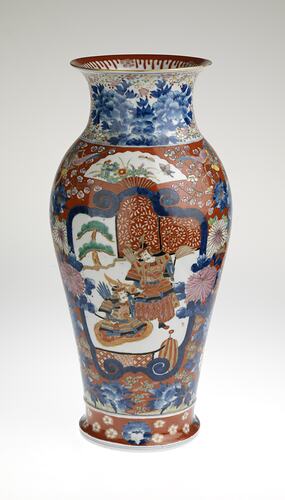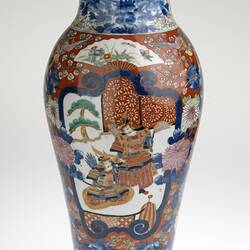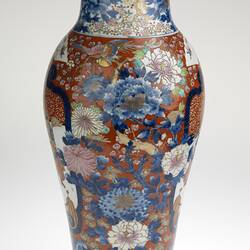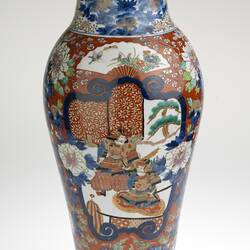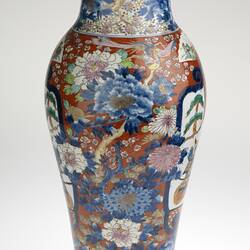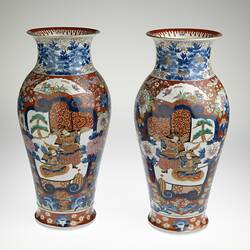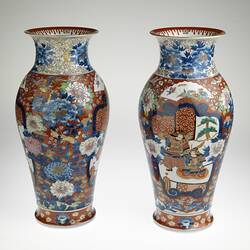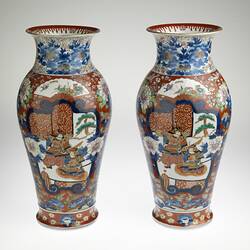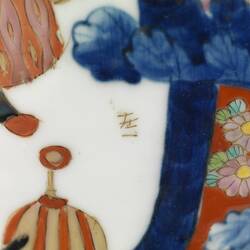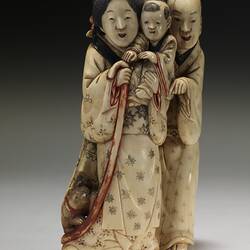Summary
Imari ware vase (one of a pair) with overglaze enamel design incorporating two samurai warriors, produced by Hichozan Fukagawa in Arita, Japan. The signautre on the vase reads Hichozan Fukagawa Sei (Fukagawa made) indicating it was created between 1856 and 1875. Fukagawa Eizaemon established Koran-sha Company in 1875 and the signature changed at this time.
Imari porcelain ware takes it name from the port-city of Imari in the Saga Prefecture on the southern island of Kyushu, Japan. From the late seventeenth century, Imari porcelain was extensively exported specifically for the European market. In Japan, this type of porcelain is also referred to as Arita-yaki, as much of it is made in the town of Arita in the Saga Prefecture.
The Japanese firm Koransha exhibited Imari ware at the 1880 Melbourne International Exhibition. The Koransha Factories were established at Arita in 1875 by Eizaemon Fukagawa, of the well-established Fukagawa family of ceramists, for the purpose of producing porcelain ware for the Western export market. The company subsequently won a certificate of merit at the Philadelphia Centennial Exposition in 1876, and a gold prize at the 1878 Paris Universelle Exposition. They exhibited Arita porcelain bowls, flower-vases - such as this one - and tea sets in Melbourne in 1880, for which they were awarded a Fifth Order of Merit.
Physical Description
Imari ware vase, tall, slightly tapering body with small, flared lip. Decorated in iron red and cobalt blue overglaze on a white ground with ornate decoration of peonies, cherry blossoms, chrysanthemums, fans and butterflies. Two central panels, each painted with two warriors.
More Information
-
Collection Names
-
Collecting Areas
-
Acquisition Information
Cultural Gifts Donation from Dr Will Twycross, 23 Jan 2009
-
Acknowledgement
Donated through the Australian Government's Cultural Gifts Program
-
Manufacturer
-
Place & Date Exhibited
Royal Exhibition Building (REB), Nicholson Street, Carlton, Greater Melbourne, Victoria, Australia, 1880-1881
-
Exhibitor
Koransha, Melbourne, Greater Melbourne, Victoria, Australia, 1880
-
Collector
Mr John Twycross, Elsternwick, Greater Melbourne, Victoria, Australia, 1880-1881
-
Inscriptions
Gilt Kanji signature on one of the paintings. Kanji painted in red on base of vases: Hichozan Fukagawa Sei (Made by Hichozan Fukagawa)
-
Classification
Royal exhibition building, International exhibitions, Exhibition heritage
-
Category
-
Discipline
-
Type of item
-
Overall Dimensions
225 mm (Width), 460 mm (Height)
-
Keywords
Ceramics, Decorative Arts, Exhibitions: Melbourne International, 1880-1881, Japanese Art, Royal Exhibition Building
